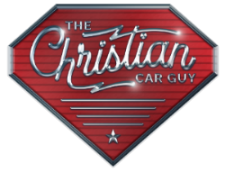
by Steve Larry
The heavy and medium-duty trucks have gone through many changes over the last few decades. Be it engine, design, equipment, and performance; the truck industry has revolutionized in modern days. There was a rise in competition in the automobile sector in producing high-quality vehicles and their components. In the mid-1980s, Ford Motor Company collaborated with Navistar International to introduce a new family of diesel engines for trucks to expand the progress of the American truck industry. This new family of engines was the Power Stroke engines, and over recent years, many new models and versions of these engines have been manufactured and launched in the global automobile market.
The Power Stroke engine chain consists of various versions and models. Every model was highly praised and utilized in the truck industry. But even though every model has been a success, they have had their fair share of defects and problems.
As stated earlier, the Power Stroke engine project kickstarted in the year 1982. The first engine of the project was the 6.9L Indirect Injection model. There was a growing demand for heavy and medium-duty trucks in the American market in the mid-1980s. Ford collaborated with Navistar International to introduce a new chain of high-end and powerful engines. The 6.9L Indirect Injection Power Stroke engine was manufactured to increase the engine’s power, durability, and torque. Subsequently, problems surfaced related to excessive combustion and power consumption.
The partnership further worked on developing more enhanced engines with fewer redundancies and eventually manufactured the 7.3L Power Stroke engine. The precedent model of this engine was the 7.3L IDI model (Indirect Injection). Ford and Navistar International developed the 7.3L Power Stroke engine, intending to increase the vehicle’s efficiency and overall performance. Many additions such as turbocharger, intercoolers, and enhanced fuel injectors were made to the engine. Despite ranking in the top 10 engines of Diesel Power magazine, it had its problems. For the efficient working of an engine, some components are necessary. The 7.3L Power Stroke engine does not promote effective gas recirculation and filter particulates, which are essential components of a diesel engine.
The 7.3L Power Stroke engine was manufactured until 2003, and later, Ford and Navistar International came up with more innovative ideas and floor plans to manufacture even better diesel engines. These innovative ideas led to the manufacturing of the 6.0L Power Stroke engine. This was developed with the modern world perspective. It had huge and impressive add-ons, which increased the vehicle’s torque and power. But even though the engine was a success, it had its fair share of problems.
The first problem seen in the engine was related to the water rotor. The engine’s water rotor is made up of plastic. This leads to the overheating of the engine and wear and tear of some components. Combustion and overheating cracks the intercoolers and halts the flow of cool air to the engine.
Similar to the other Power Stroke engines, the Exhaust Gas Recirculation system (EGR) undergoes many glitches and catches while performing. But the problems faced by the EGR system in this engine are multiplied due to the overheating of certain components. This leads to a massive discharge and pileup of dirt and soot.
The engine coolants and intercoolers installed in the engines get damaged easily after some years of use. As these components are installed near the intake pipe, they can get overheated and ruptured due to high force and might need repair or permanent replacement.
There were some problems regarding the engine’s charging bolts and the turbocharger. The issue keeps on resurfacing with the heavy loads on the engine.
After a successful tenure of the 6.0L Power Stroke engine, Ford and Navistar International developed new and advanced ones. In 2008, a new one came into the picture under a 6.4L Power Stroke engine model. The main motive behind manufacturing this engine was to eliminate the redundancies present in the previous model and enhance the truck and engine quality to a very high level. They managed to produce a brilliant engine, but it too had its different set of problems. The major fault was in the engine’s design. The engine’s different and abnormal design did not match perfectly with the vehicle’s exterior, which created various issues. Due to this issue, there were many cases where repairs and towing were necessary. This turned out to be a costly and time-consuming affair for engine users around the world.
Also, this engine has embedded particulate filters. These filters are placed near the diesel filter and are used for sucking in soot and dust particles. After many months of constant use, the filter becomes fully soaked with dirt and soot and might hamper the engine’s efficient functioning as a whole. This also leads to the damage of the diesel filter and lessens the fuel quality.
After the 6.4L Power Stroke engine’s successful tenure, Ford designed new plans for developing a better and enhanced version of it. Therefore, they decided to work on the new engine individually, without the collaboration of Navistar International. After many months of planning and efforts by the management team and engineers, Ford developed the 6.7 Power Stroke. Ford manufactured this engine to eliminate every problem that occurred in the previous models, while also enhancing the engine quality in terms of performance, reliability, and power. Many high-technology additions were made to this engine, including an intercooler, enhanced torque components, and efficient pushrods. Due to these changes, the vehicle’s driving experience was massively improved, according to Ford’s detailed survey. But still, some problems related to the engine surfaced. One of the most frequently occurring issues was with the EGR system. The Exhaust Gas Recirculation sensors installed in the engine were always subject to wear and tear. Ford had to issue warranty cards and guarantee free replacements for these faulty EGR sensors.
Ford has developed a new third-generation version of the 6.7L Power Stroke engine. Ford developed plans for enhancing this particular engine rather than repairing the redundancies of the previous models. Various additions and repairs were made to the previous models. Steel pistols replaced aluminum pistols. Steel pistols have effective conductibility and allow less friction between the components, which helps in reducing combustion. The problem surrounding the Exhaust Gas Recirculation coolant discharge still exists in this version of the Power Stroke engine today.



